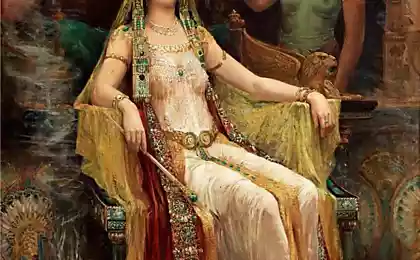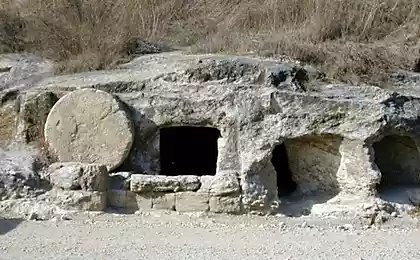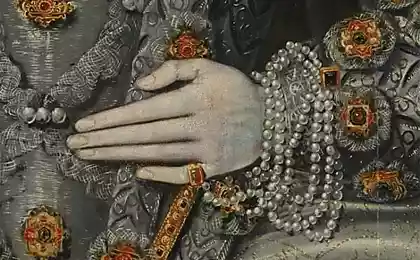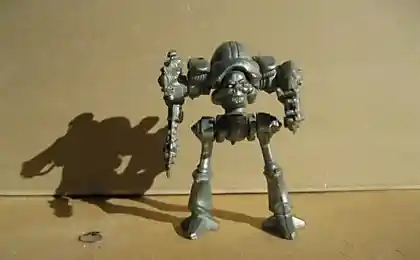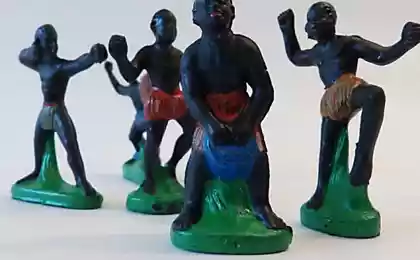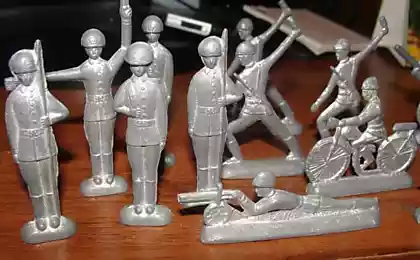1357
Figurines
Tin miniatyura- is, quite simply, the tin soldiers. More precisely, it is now distant descendants of Andersen's fairy tale character, sometimes quite unlike its ancestor. I think everyone who has seen the fragile petite figure, though descended from the canvases of battle genre, engraved armor, dusty uniform or patterned Japanese kimono, the visible to the smallest buckle and rivet ammunition, with almost real sharp steel weapon, probably the last to be resolved to give it for children to play. Tournament knight in armor of the XVI century
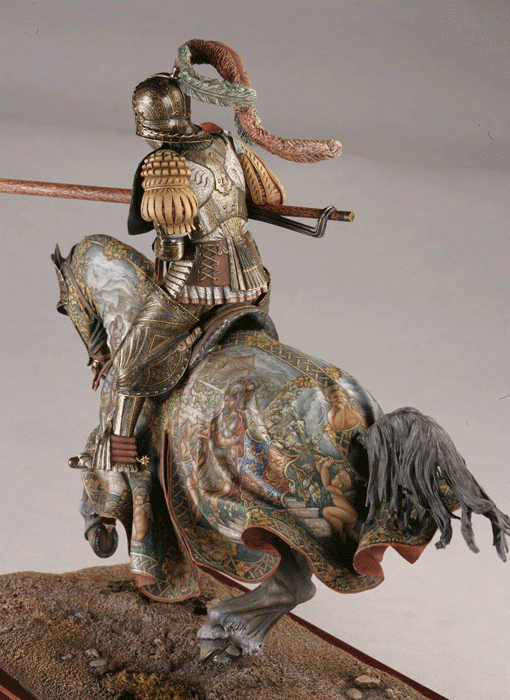
Knights in ceremonial armor, XVI century
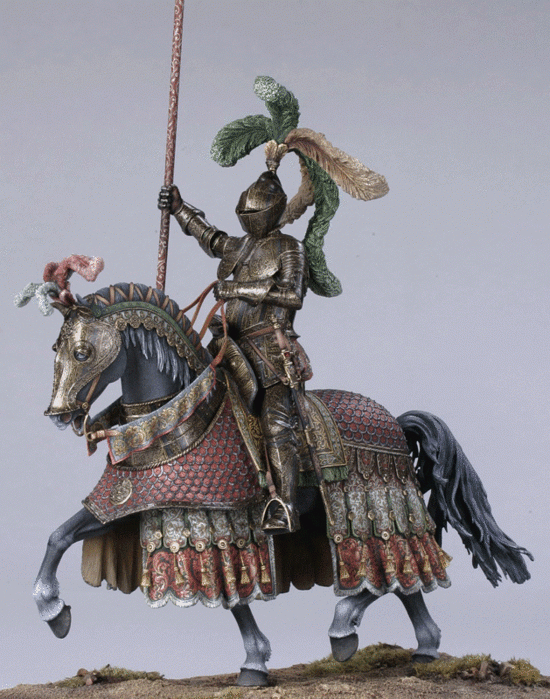
KNIGHT
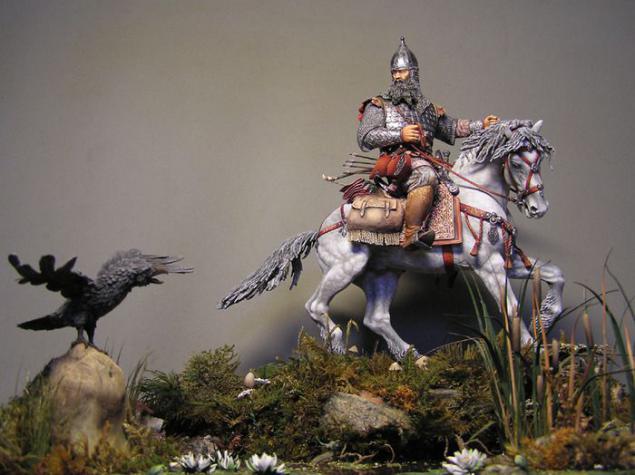
Vasily III

Boris Godunov

IVAN THE TERRIBLE
It is not the role of a toy like stilled fully armed soldiers on eternal guard played in ancient times. Sometimes, the same small, and sometimes as a man, this image is guarded tombs of rulers, it illustrated the power of their armies to the ambassadors and visitors palaces (recall buried clay army of Qin Shih Huang, Immortal Guards march on the walls of the palaces of the Achaemenid, columns of troops, chariots and siege engines in the Assyrian reliefs, bronze figurines of Etruscan, Roman, Carthaginian warriors). Later, in the sixteenth to eighteenth centuries, a collection of miniature soldiers frequently replenished treasure of kings and emperors. Sometimes they were full of gold and precious stones, such as a court and the army of the Mughals, from the collection of the Elector of Saxony, Augustus. Emperor Peter III gave the command of his army of tin is almost less time than the actual management of the Empire ...

Dmitry Donskoy

Alexander Nevsky
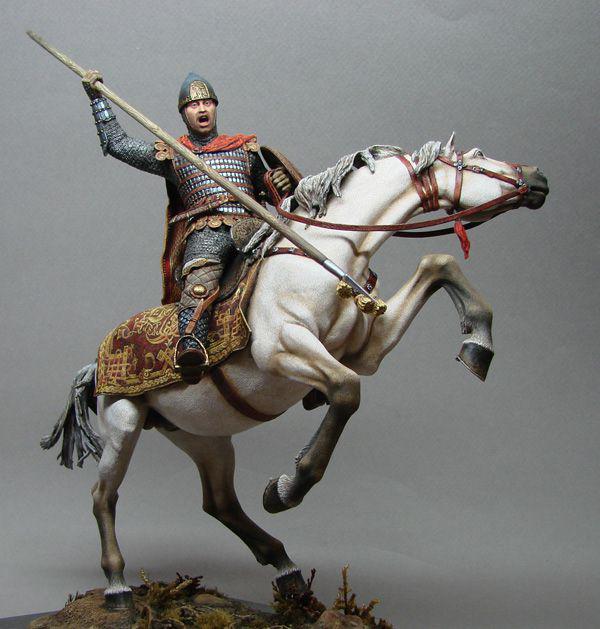
Vladimir Monomakh
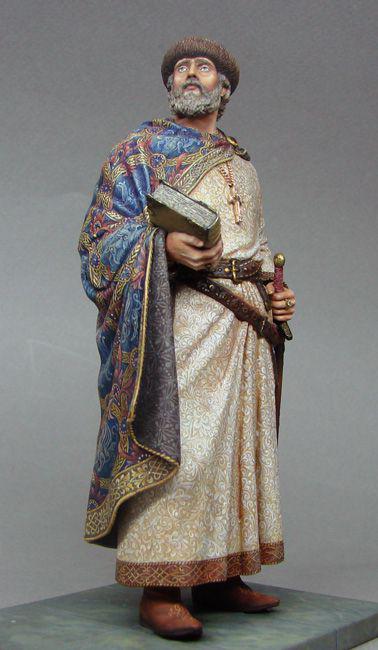
Prince Ivan III
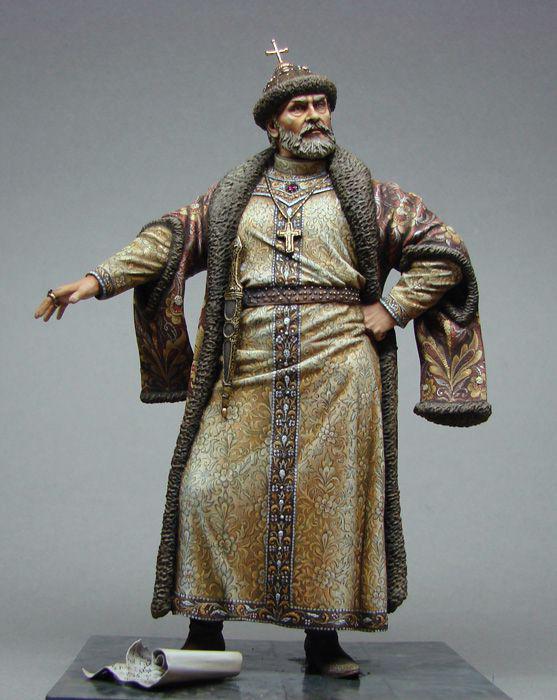
PETER I THE GREAT
Around the same time, it begins the story of tin soldiers as children's toys. In the first place it was in half-relief, "Nuremberg" figurines, engraved poured into forms. Performed they are pretty carefully, and were generally very expensive ...
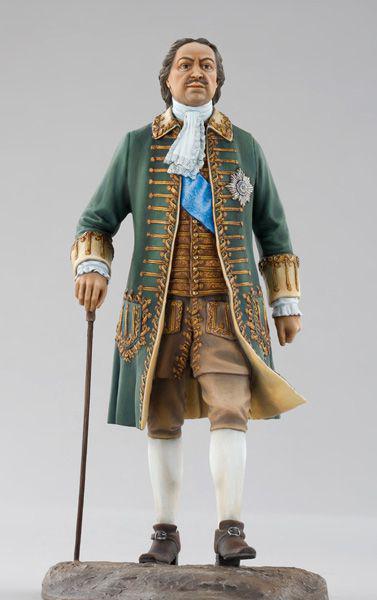
Emperor Charles V
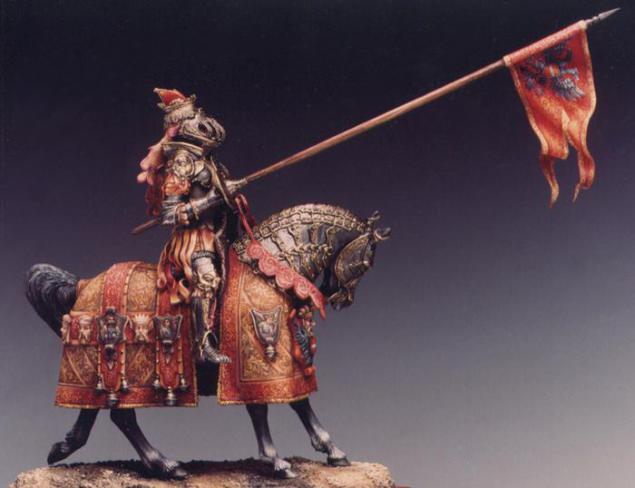
Cardinal Richelieu
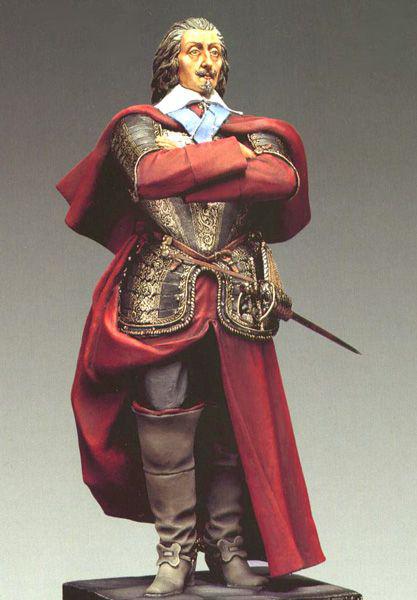
Chinese commander on the combat elephants
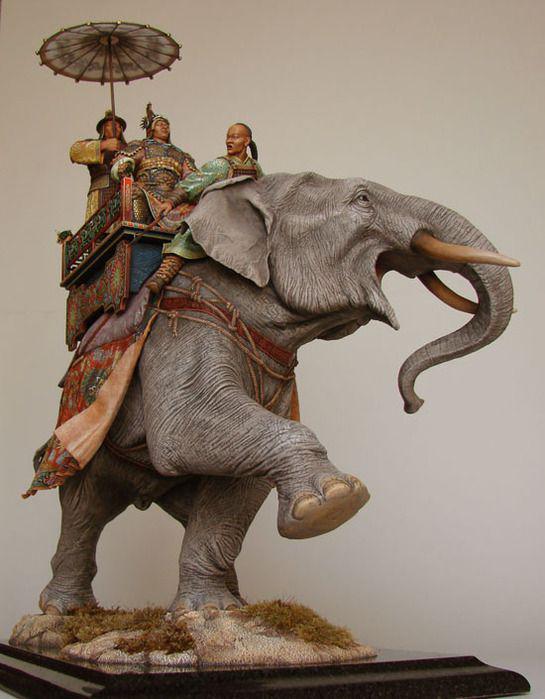
DRUMMER on camels
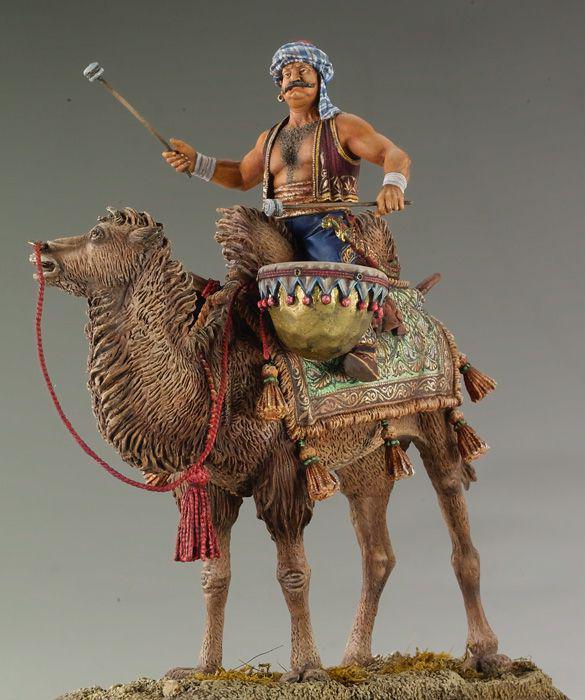
HORSE SAGITTARIUS (tenant)
Today, tin miniature shares, mainly on the game (not to be confused with the toy!), Souvenir and collectible. The first is to play real (or fantastic in the games of the World Varharmera) battles fans of military history and tactical games. Collectible miniatures differ from souvenir (whose production put on stream) ultimate historical authenticity and exclusive performance.
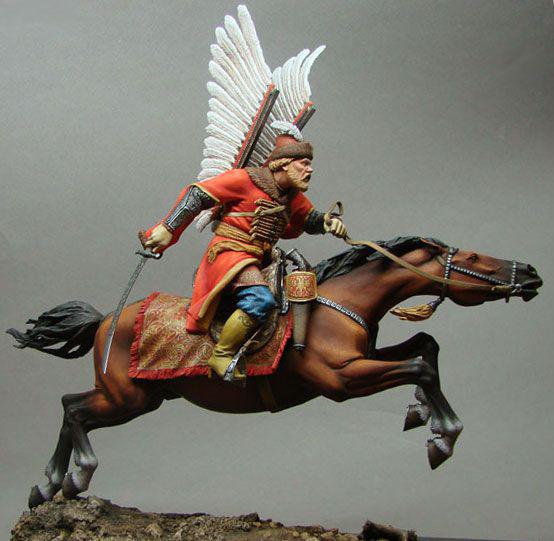
KING England, Henry VIII
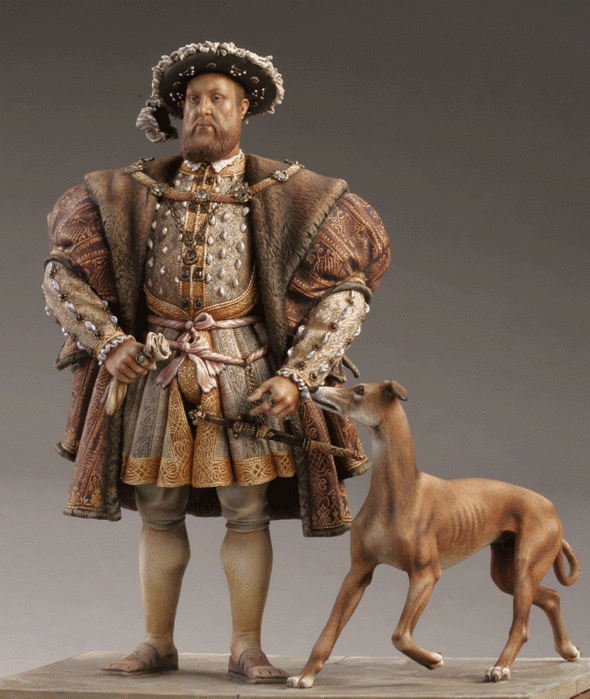
King of England Richard I, 1190g

King of Spain Philip II, 1570g
The process of creating each new figures long, multi-stage, requires the involvement of many highly skilled professionals. The firms involved figurines, it is usually preceded by long consultations with experts on military history, the study of literature, visiting museums and archival holdings, and sometimes historical places where the battles that will play ... The artist defines the overall composition, and then begins miniaturist sculptor who creates a sculpture of a full, expressive and dynamic. Further work on it modellers and molders (often a complicated figure is molded and cast in parts, and sometimes weapons are machined from solid metals more). Collectors treated and adjusted to each other of the details (and for their collectible figurines can be a few dozen!), And then figure returns to the main artist.
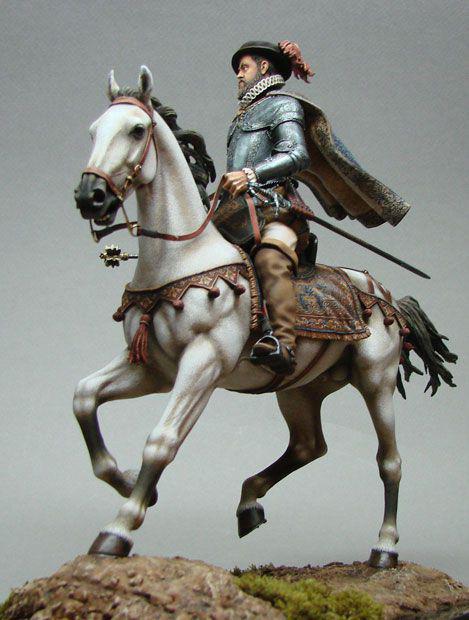
King Louis XIV
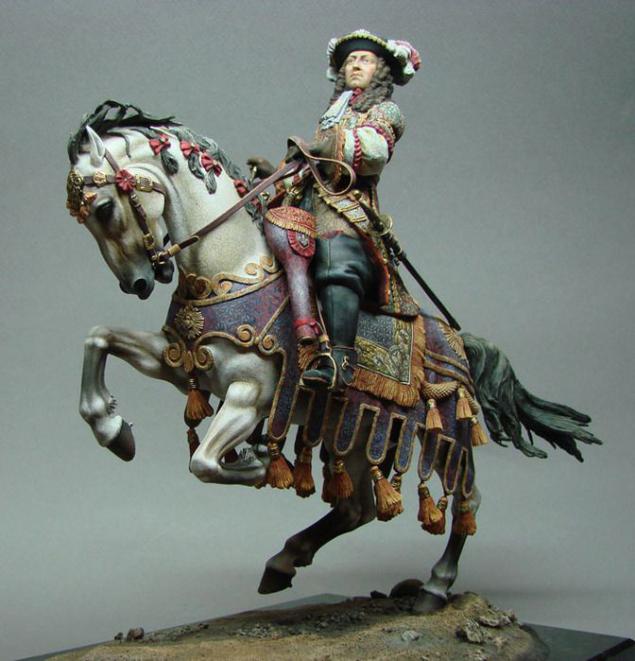
KING OF FRANCE FRANCIS I
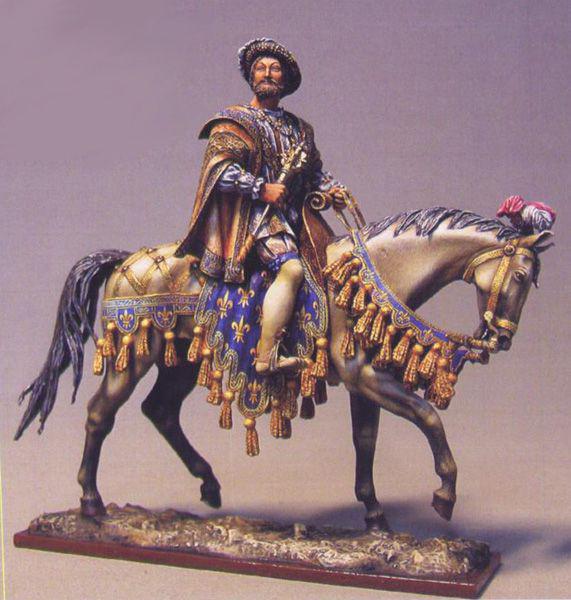
Napoleon Bonaparte
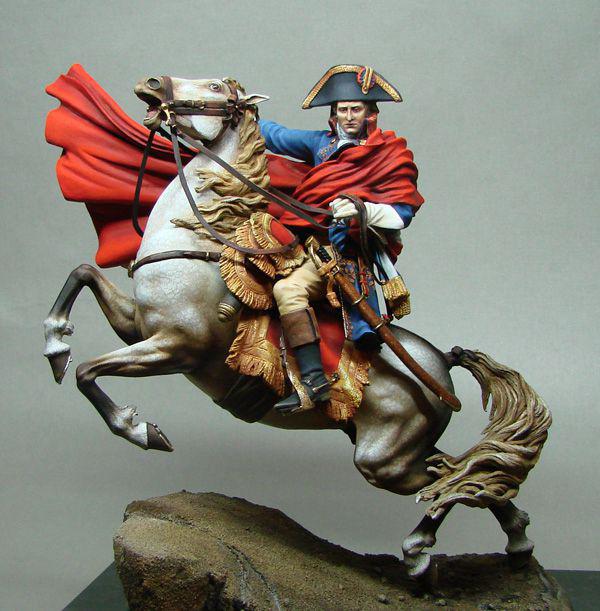
Borodino 1812
It begins a long and laborious process of painting sample, comparable only with the work of the sculptor. The figure is covered with soil and paint tempera and acrylic paints. Essentially, this is no different from the conventional art, the only difference is that the paint does not rest on the canvas, and on the surface of the volume: the same transmission volume, chiaroscuro, portrait drawing of a person (a thumbnail size is typically less than 54 to 60 mm! ). Of course, there are some nuances and secrets that only develops over time, even an experienced artist, has not worked before in this genre. The special task of the artist-imitation texture of each material in clothing and ammunition: The skin should look like skin and trees, brocade should be different from silk and wool on canvas boots can be worn, and armor polished to a mirror finish ... All this together should make the audience completely forget the material of the cast historic figure, it takes on its own unique personality!
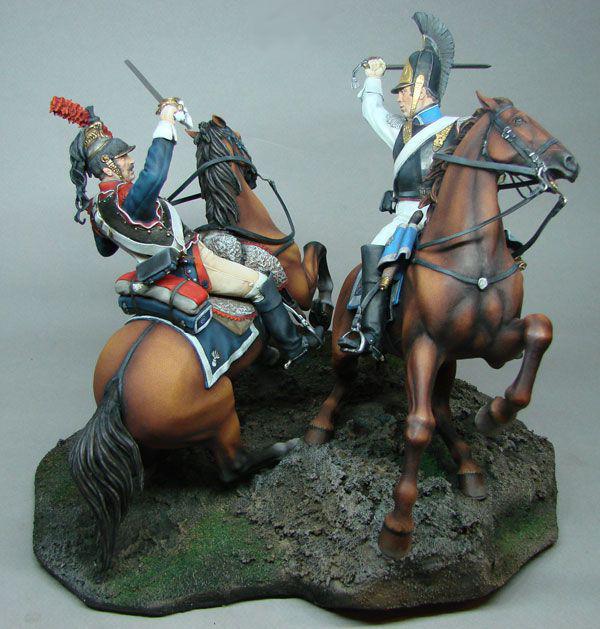
Vizier
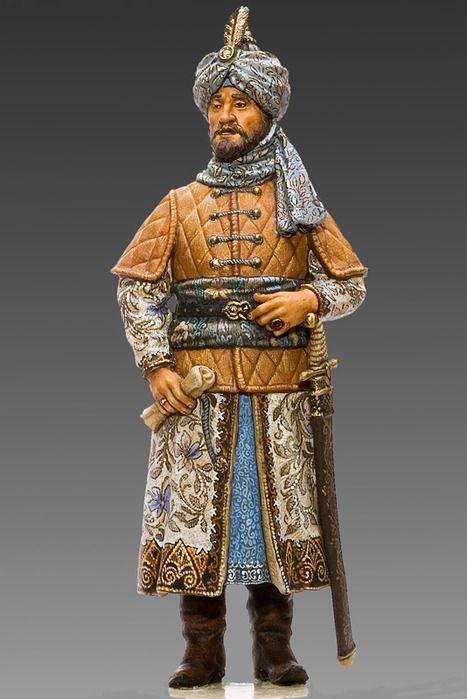
OFFICER
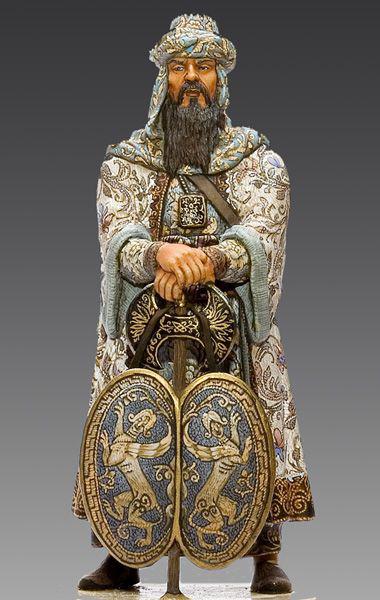
Walking WARRIOR
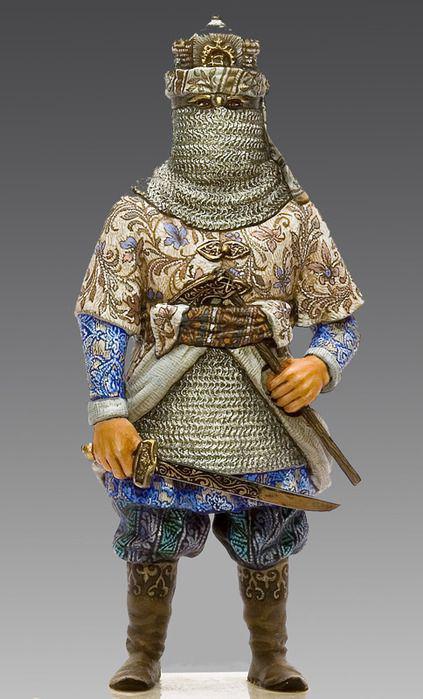
WOUNDED Arab warriors, XIV century
Depending on the complexity, painted miniatures on the leaves of a few days or weeks, and even months! .. If the figure sign it in installments, at the end of the work they are carefully glued together, and played on the stand of the environment or the landscape of the battlefield. There are single figures, but sometimes made of the composition, layouts and dioramas that reproduce entire scenes, inscribed in the landscape or historic interior.
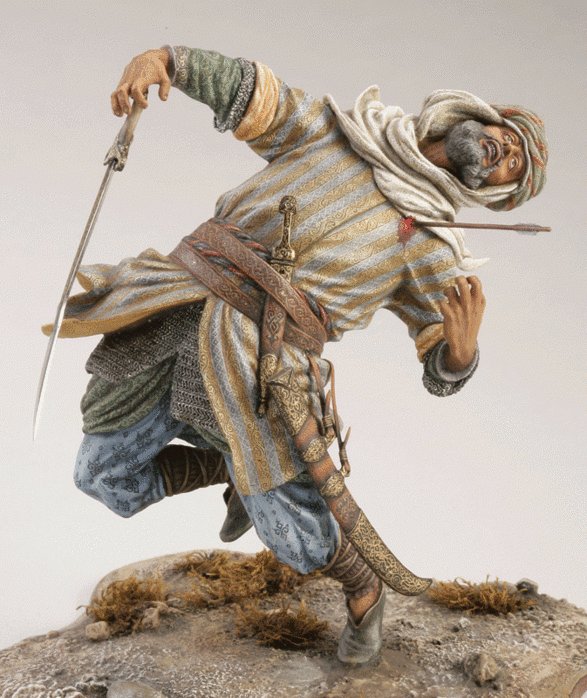
Polish Hussars
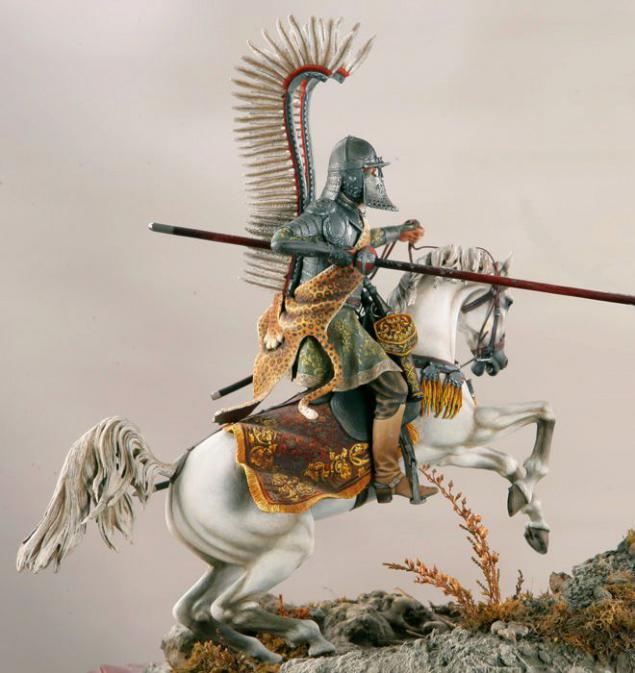
ROBERT MAMINAS. FRANCE, XV century
Collectible miniature painting is often individual and unique. It determines the value of the figures, whether pewter casting cheap souvenirs, unique or original works of decorative art. And that vN today in many countries historical miniature reaches such excellence, combining performance and realism of jewelry that becomes an independent genre of art combining sculpture, painting, graphics and design ...
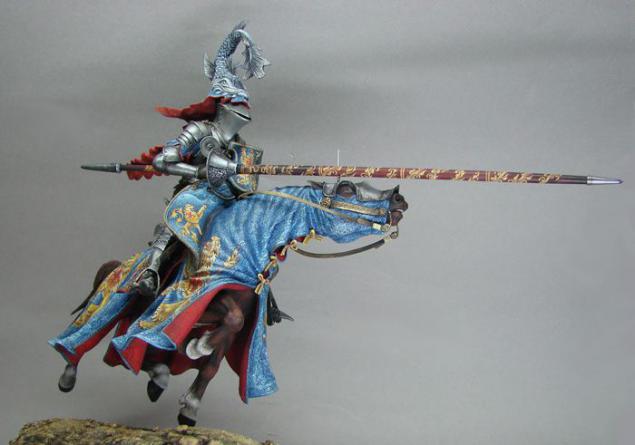
KNIGHT

KNIGHT, XIV century
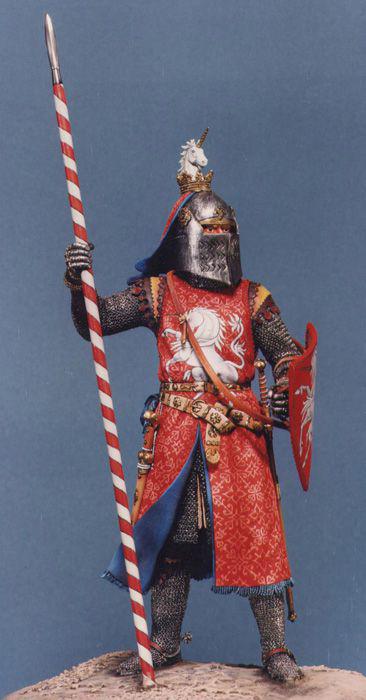
KNIGHT
But the painting is just the tip of the iceberg. Before her, the artist has to learn the culture and life, art and ornaments, heraldry and anthropological type of people to which belongs to the character, and it is in his era. This work- touch to the history of civilizations, the steady expansion of horizons, introduction to the culture of different nations, each time goes far beyond what is necessary for a particular job information ...
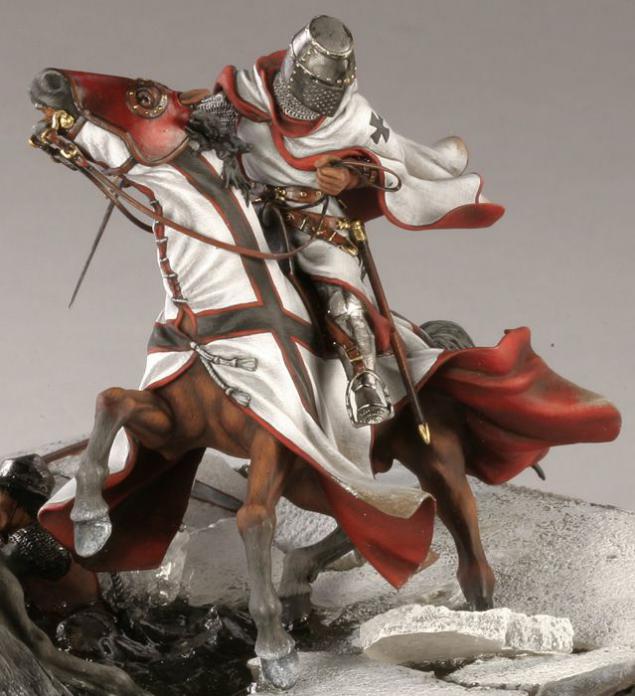
KNIGHT

KNIGHT
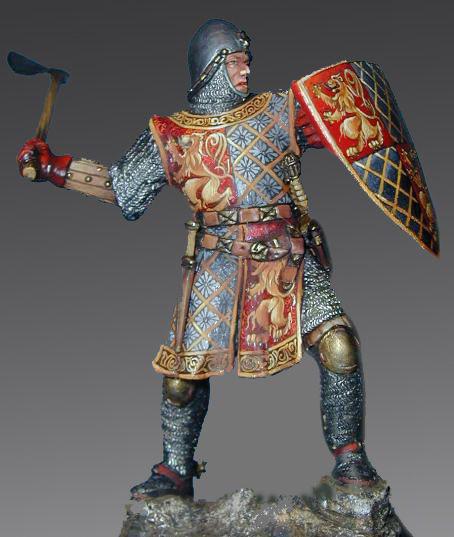
KNIGHT
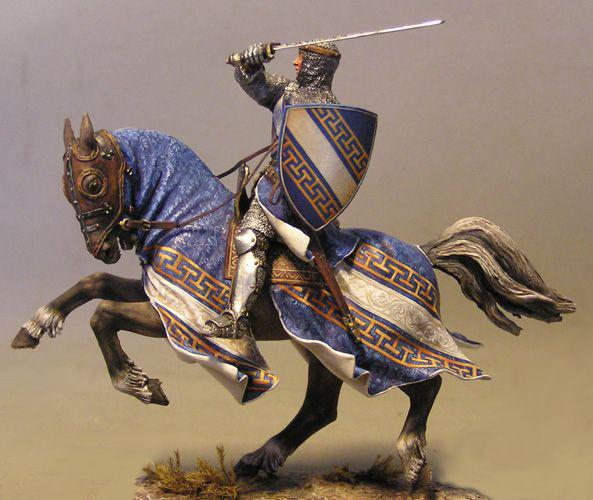
KNIGHT
Historical miniature is becoming increasingly popular in the world, not only among collectors. Different countries have issued dedicated to her magazines and catalogs, regular international exhibitions. As a collectible, it is now still prestigious and elitist. Not so much because of the high cost of miniatures. It really enjoys it may not be any collector of expensive things, but only a man deeply knows and loves history, while art lovers. Very promising is the direction and historical museums for exhibits layout or diorama do not require a large area for the exposure, but where else can you more clearly and thoroughly examine carefully recreated the appearance of distant people ages!

Sultan Saladin, XII century

Sultan Suleiman the Magnificent. 1530g
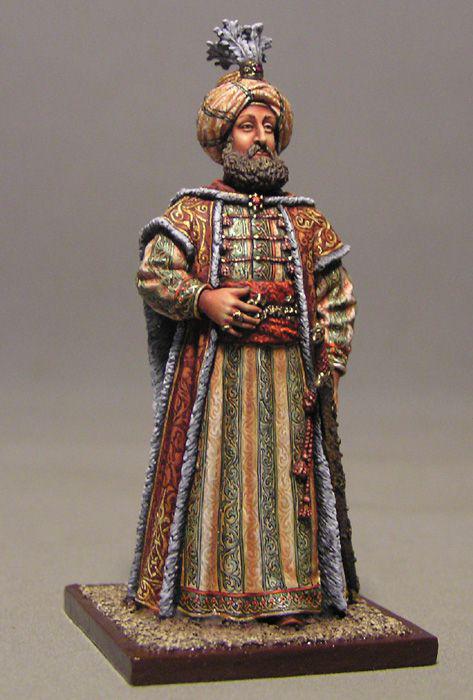
Francis Drake, England, 1580g

Genghis Khan Mongol Empire, 1215
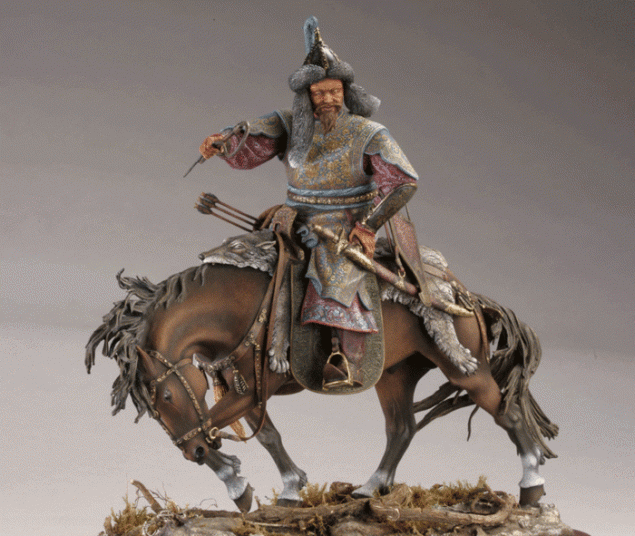
Source: gerald-n.livejournal.com

Knights in ceremonial armor, XVI century

KNIGHT

Vasily III

Boris Godunov

IVAN THE TERRIBLE
It is not the role of a toy like stilled fully armed soldiers on eternal guard played in ancient times. Sometimes, the same small, and sometimes as a man, this image is guarded tombs of rulers, it illustrated the power of their armies to the ambassadors and visitors palaces (recall buried clay army of Qin Shih Huang, Immortal Guards march on the walls of the palaces of the Achaemenid, columns of troops, chariots and siege engines in the Assyrian reliefs, bronze figurines of Etruscan, Roman, Carthaginian warriors). Later, in the sixteenth to eighteenth centuries, a collection of miniature soldiers frequently replenished treasure of kings and emperors. Sometimes they were full of gold and precious stones, such as a court and the army of the Mughals, from the collection of the Elector of Saxony, Augustus. Emperor Peter III gave the command of his army of tin is almost less time than the actual management of the Empire ...

Dmitry Donskoy

Alexander Nevsky

Vladimir Monomakh

Prince Ivan III

PETER I THE GREAT
Around the same time, it begins the story of tin soldiers as children's toys. In the first place it was in half-relief, "Nuremberg" figurines, engraved poured into forms. Performed they are pretty carefully, and were generally very expensive ...

Emperor Charles V

Cardinal Richelieu

Chinese commander on the combat elephants

DRUMMER on camels

HORSE SAGITTARIUS (tenant)
Today, tin miniature shares, mainly on the game (not to be confused with the toy!), Souvenir and collectible. The first is to play real (or fantastic in the games of the World Varharmera) battles fans of military history and tactical games. Collectible miniatures differ from souvenir (whose production put on stream) ultimate historical authenticity and exclusive performance.

KING England, Henry VIII

King of England Richard I, 1190g

King of Spain Philip II, 1570g
The process of creating each new figures long, multi-stage, requires the involvement of many highly skilled professionals. The firms involved figurines, it is usually preceded by long consultations with experts on military history, the study of literature, visiting museums and archival holdings, and sometimes historical places where the battles that will play ... The artist defines the overall composition, and then begins miniaturist sculptor who creates a sculpture of a full, expressive and dynamic. Further work on it modellers and molders (often a complicated figure is molded and cast in parts, and sometimes weapons are machined from solid metals more). Collectors treated and adjusted to each other of the details (and for their collectible figurines can be a few dozen!), And then figure returns to the main artist.

King Louis XIV

KING OF FRANCE FRANCIS I

Napoleon Bonaparte

Borodino 1812
It begins a long and laborious process of painting sample, comparable only with the work of the sculptor. The figure is covered with soil and paint tempera and acrylic paints. Essentially, this is no different from the conventional art, the only difference is that the paint does not rest on the canvas, and on the surface of the volume: the same transmission volume, chiaroscuro, portrait drawing of a person (a thumbnail size is typically less than 54 to 60 mm! ). Of course, there are some nuances and secrets that only develops over time, even an experienced artist, has not worked before in this genre. The special task of the artist-imitation texture of each material in clothing and ammunition: The skin should look like skin and trees, brocade should be different from silk and wool on canvas boots can be worn, and armor polished to a mirror finish ... All this together should make the audience completely forget the material of the cast historic figure, it takes on its own unique personality!

Vizier

OFFICER

Walking WARRIOR

WOUNDED Arab warriors, XIV century
Depending on the complexity, painted miniatures on the leaves of a few days or weeks, and even months! .. If the figure sign it in installments, at the end of the work they are carefully glued together, and played on the stand of the environment or the landscape of the battlefield. There are single figures, but sometimes made of the composition, layouts and dioramas that reproduce entire scenes, inscribed in the landscape or historic interior.

Polish Hussars

ROBERT MAMINAS. FRANCE, XV century
Collectible miniature painting is often individual and unique. It determines the value of the figures, whether pewter casting cheap souvenirs, unique or original works of decorative art. And that vN today in many countries historical miniature reaches such excellence, combining performance and realism of jewelry that becomes an independent genre of art combining sculpture, painting, graphics and design ...

KNIGHT

KNIGHT, XIV century

KNIGHT
But the painting is just the tip of the iceberg. Before her, the artist has to learn the culture and life, art and ornaments, heraldry and anthropological type of people to which belongs to the character, and it is in his era. This work- touch to the history of civilizations, the steady expansion of horizons, introduction to the culture of different nations, each time goes far beyond what is necessary for a particular job information ...

KNIGHT

KNIGHT

KNIGHT

KNIGHT
Historical miniature is becoming increasingly popular in the world, not only among collectors. Different countries have issued dedicated to her magazines and catalogs, regular international exhibitions. As a collectible, it is now still prestigious and elitist. Not so much because of the high cost of miniatures. It really enjoys it may not be any collector of expensive things, but only a man deeply knows and loves history, while art lovers. Very promising is the direction and historical museums for exhibits layout or diorama do not require a large area for the exposure, but where else can you more clearly and thoroughly examine carefully recreated the appearance of distant people ages!

Sultan Saladin, XII century

Sultan Suleiman the Magnificent. 1530g

Francis Drake, England, 1580g

Genghis Khan Mongol Empire, 1215

Source: gerald-n.livejournal.com




